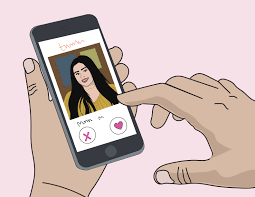The “AND” Era; We’re Never Just One Thing
New research release- we aren't just Barbie or Oppenheimer; we're both!
The Next Big Think! will send you insights and links to keep you ahead of societal shifts.
💡One Insight
New Research — The “AND” Era
What:
As humans, we navigate a peculiar spectrum between complexity and simplicity. Each of us perceives ourselves as a unique 🦄 unicorn (e.g., deep/multidimensional), yet ironically, we tend to sort others into tidy binary categories. This intriguing dichotomy forms the backbone of our new report, The “AND” Era.
We’ve witnessed an increasing cultural appetite to sort and assign labels to others - Red/Blue, Barbie/Oppenheimer, Male/Female, Billionaire/Rest of us. We’ve eliminated space for nuance as we swipe right and make decisions in nanoseconds on people, brands, and ideas.
With the rapid advancement of technology facilitating this fast-paced categorization process— distinguishing 'right/wrong', 'love/hate', 'buy/avoid'— our humanity appears to be lagging behind.
However, let's not forget that it's the contradictions and paradoxes that define our human experience. A superhero without internal conflicts or a protagonist without a multifaceted personality would be far less compelling.
Fortunately, there's a glimmer of hope - younger people are questioning this binary perspective. Our discussions with Americans under 40 revealed an inclination toward transcending divisive polarization. They aspire to create a space for consensus building, introducing a more inclusive era - The "AND" Era.
To quote a participant from our Gen Z salon, "The binary perspective has limited us to black and white boxes. We are more than that. We are artists, professionals, community members, and so much more."
Therefore, we have curated The "AND" Era report to underscore this crucial coexistence of identities. It aims to highlight that we can embrace multiple facets of ourselves simultaneously. Our report advocates for a shift from the 'either/or' mindset to a more encompassing 'and' perspective. We invite you to explore this new era with us, embracing a world of nuances over binary categorizations.
What the data tells us:
The “AND” Era surveyed 5,364 U.S. adults and explores six dualities of conflicting human needs and desires.
Money: Splurgy & Stingy
Barron’s featured our data on this duality here.
Consumers are embracing a “split-brain budget ” cutting back on basics but making room for personal luxuries. Think shopping for single-ply toilet paper while wearing Gucci loafers. Gen Z says luxury goods are more tangible than more “traditionally responsible” investments, like mortgages. While this may seem contradictory, it speaks to a greater intentionality in spending that we have seen post-pandemic. Consumers are living for today and making room for what matters to them.
63% of Americans agree, “I'm not going to deprive myself the comforts of life now for a future that feels like it could change at any moment.”
69% say, "I have cut out more 'in-between' spending (i.e., cutting out things I don't care about that much in order to splurge on something I really care about and cover basic needs)."
70% of Gen Zs and Millennials have found ways to splurge on themselves, such as high-quality home items (33%) or luxury fashion items (31%).
86% of Gen Zs and Millennials have tried to save on everyday items by shopping at dollar stores (47%), seeking deals and using coupons (47%), and opting out of more social events (35%).
Work: Quiet & Loud
In our conversations with people, we found the term “quiet quitting” was anything but “quiet.” Americans are protesting the system by retreating into a zone of safety. They don’t see it as a reflection of being ”lazy,” they see it as an appropriate reaction to an uneven system. It’s worth noting while people are actively prioritizing their lives, they are still actively passionate about their work and upskilling. They can do both.
70% of Americans say “Quiet quitting is actually a loud statement by employees about what they are looking for.”
The top action employers can take to improve employee engagement is to offer 4-day workweeks
Activism: Protesters & Pacifists
From cancel culture to rage-Tok, Americans are imbued by frustration over the state of affairs. Adrenals are pumping for Millennials; as they say, nothing has felt stable in the last 20 years, and they are already exhausted imagining what might happen next. Yet, at the same time, there is a realization that it won’t be a death match that saves us; instead, acceptance, kindness, and a connection back to humanity is the only path forward.
50% of Americans agree, “It’s essential to get angry about issues in order to drive change.”
76% agree, “Kindness will ultimately help us overcome polarization in America.”
Outlook: Nostalgic & Futuristic
Y2K fashion, 90s Con, and teen luddites, young people feel nostalgic for a simpler time—when connection was human-first versus digital-first. At the same time, young Americans are diving into digital spheres, crafting their digital-first identities, launching careers, and growing influential communities in increasingly immersive spaces. As tech becomes as ubiquitous as the air we breathe, we see a pushback and a push forward
Business: Big Stability & Small Saviors
With layoffs and innovation drawbacks in big business, entrepreneurially-minded folks are stepping in to fill the gaps. And they believe they can both create impact while earning profits. We see Americans overall hedging their bets, looking toward big business for job security while still believing in the importance of supporting small businesses.
“When I worked for a start-up, I wore a ton of hats and worked around the clock, it’s why I prefer to work at a larger company I know my role, and I can attain more work-life balance in the process.”- Gen Z salon participant
59% of employed Americans agree, “I would rather work at a big company for job security.”
89% of Americans agree, “I believe in the power of small business and want to support them.”
AI: Automated & Human
The debate of humans versus machines goes back hundreds of years. Its latest battleground is AI, an explosive topic ranging from the end of humanity to the beginning of a new growth era. In a new AI era, we may find genuine creativity and human connections to become more valued. Or we may find ourselves under the thumb of a complex rationalizing machine, being sorted through a system that callously restructures our purpose in the world. Either way, people, especially Millennials, are working through their feelings about the life-altering wave of technology to embrace the upside while protecting their backs
“Algorithms aren't scary, they are a source of personal inspiration. It brings you insight into what you might find as personal growth levers, new communities that might interest you, points of transformation, new thinkers and ideas.” -Gen Z Salon Participant
READ THE FULL REPORT HERE: The “AND” Era.
What to think about
Do you really know your audience, or are you chasing the same insight as the category? A couple of things to consider;
Don’t Trust The Demos: Marketers will need to move beyond traditional demographic segments, tailoring psychographic strategies to address the multi-dimensional identities consumers express and investigate the reason behind why people act the way they do. (e.g., young people who desire tangible certainty are driving luxury sales, etc.).
Leverage Tension: Relying on one-sided narratives feels hollow (e.g., the good guy); marketers can leverage the dualities of human experiences to create authentic narratives that embody the contradictions inherent in individuals (e.g., Ryan Gosling as Ken wrestling with his male identity).
More Imaginative Research: Considering the massive change we’ve experienced in the last three years and the likelihood of further rapid disruption, marketers need to ensure they are in lockstep with the emerging needs, attitudes, and aspirations of consumers. We help clients do that with in-depth dialogues, mobile ethnographies, and insightful future-oriented inquiries that bring nuanced understanding. Meanwhile, creatively structured quantitative research substantiates shared connections, new motivations, and emerging beliefs. This robust approach allows for a comprehensive exploration of human complexities and the creation of breakthrough insights that genuinely resonate.
3 Links
How Contradictions Power Barbie (The Atlantic)
The Collectors Offering Thousands for Vintage Pyrex (Curbed)
How Two Brothers Turned Planespotting Into YouTube Gold (Thrillist)
Curiosity is contagious; if you like this newsletter, please share it!!
Penned by Libby Rodney and Abbey Lunney, founders of the Thought Leadership Group at The Harris Poll. To learn more about the Thought Leadership Practice, just contact one of us or find out more here.












